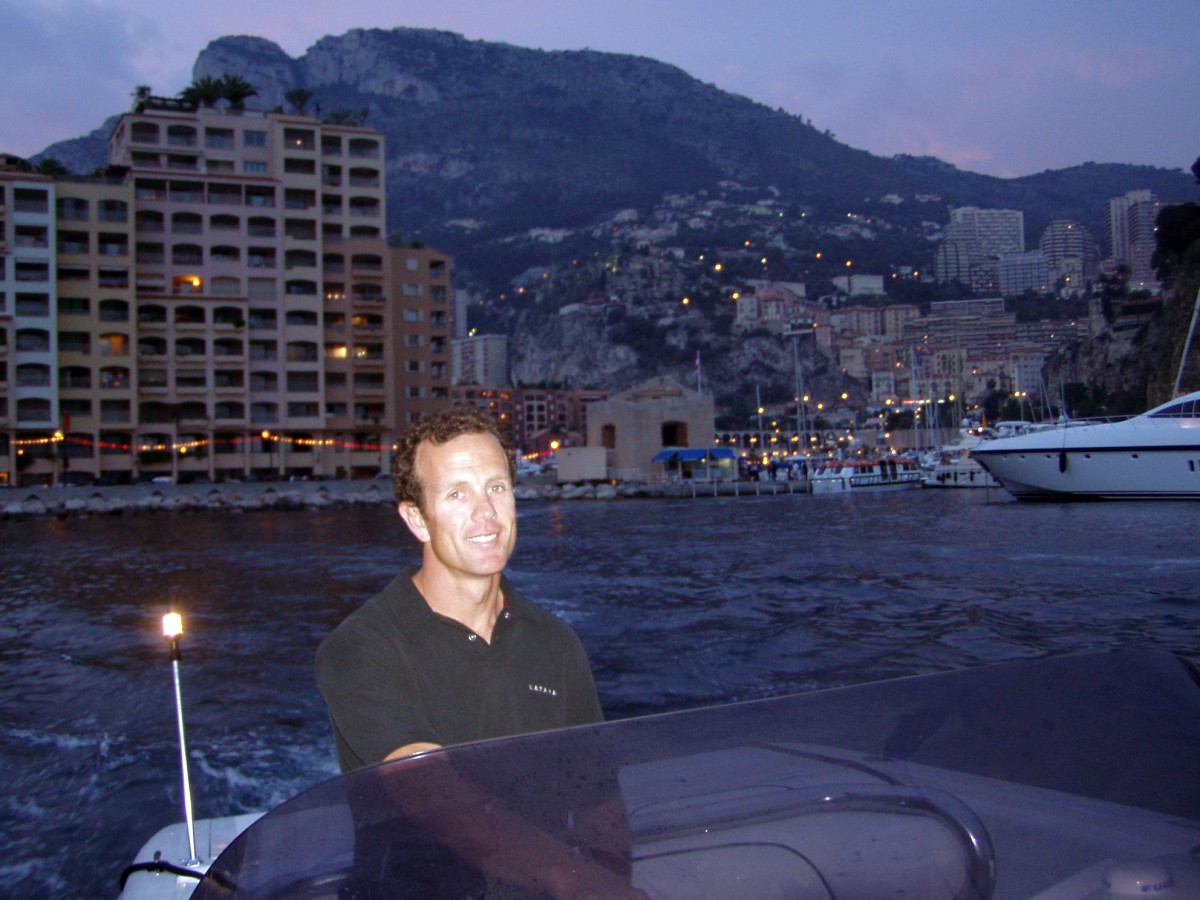The value in crisis
In this interview, Brendan O’Shannassy calls for a values-based revolution to future-proof the industry and reclaim its potential…
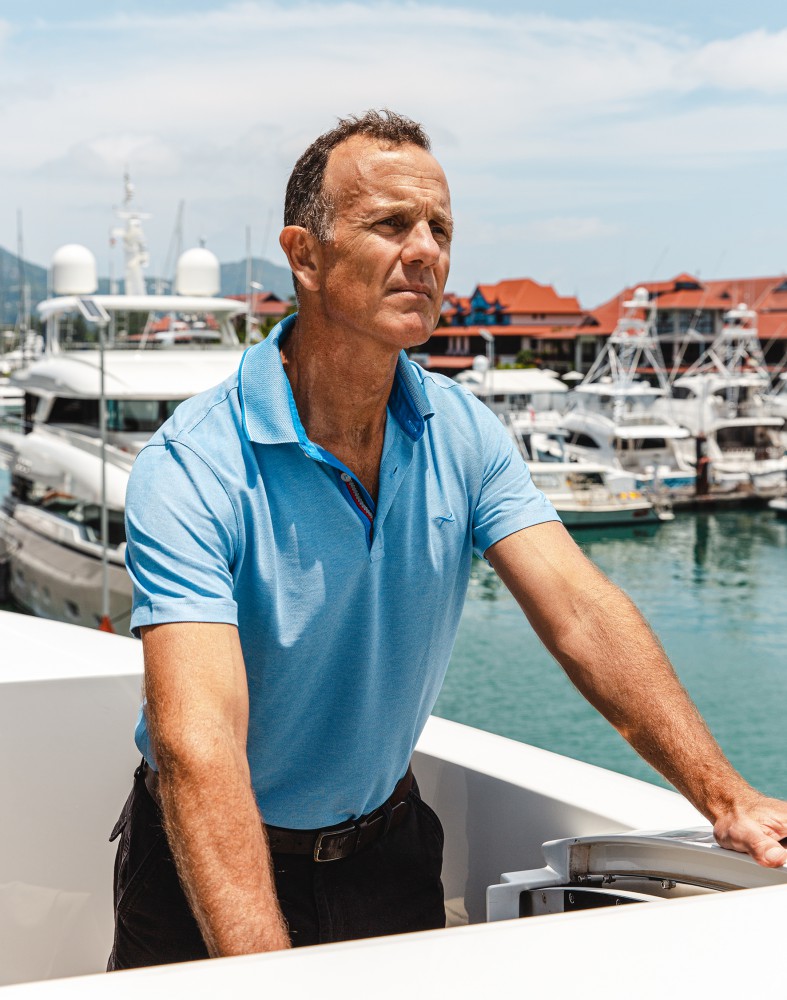
Captain Brendan O’Shannassy doesn’t deal in vague ideas. After decades at sea running some of the fleet’s most iconic yachts, he’s had time (and reasons) to question how the industry actually works and how much of it still doesn’t. Now based in the Austrian Alps, O’Shannassy has gone off piste, trading Fremantle’s Indian Ocean breeze for alpine air, operating ski apartments when he’s not sailing as captain on a leading charter yacht.
At first glance, it’s an unusual turn. From dive shops and naval service to the helm of superyachts up to 10,000gt, his career has always revolved around structure, service and the people who deliver both. That full-circle journey gives him a rare vantage point, one that sees through the Potemkin village and speaks plainly to the gaps. With calm, precise conviction, he’s calling time on the blind spots and inefficiencies that no one else seems willing to touch.
“Over the past two decades, we’ve massively increased what yachts can deliver,” he explains: “spa treatments, fitness installations, multiple and larger tenders, watersports centres and of course now the padel court. The experience has gone up tenfold and really it’s a great compliment to the designers and builders. However, we’re still operating under the same manning model as we did twenty years ago. It’s just not sustainable. We’re asking more from the platform, more from the crew, more from the design, but we haven’t changed the way we operate. And that gap is getting harder and harder to square.”
And it’s this seemingly widening crevasse between capability, culture, service and structure that O’Shannassy has spent a career navigating. But his journey into yachting and the insight that came with it began long before he ever stepped foot on board.
The foundations
Born in the coastal town of Fremantle, Australia, the son of hoteliers, a young O’Shannassy spent his youth diving, sailing and racing boats, spending any pocket money he had in the local dive shop. By the time the America’s Cup came to town in 1987 (the result of Australia II winning the Cup in 1983, breaking the New York Yacht Club’s 132-year winning streak), the dream of a life at sea had already taken hold.
Just like the most recent return, the America’s Cup arrived in the middle of a recession and bleak job prospects for young people. So, although he was studious, bright and ambitious, instead of following the conventional route through university, he joined the Royal Australian Navy through a programme that combined officer training with a formal degree. It was a disciplined environment that provided real-world experience and responsibility from the outset.
“I really enjoyed my time there. I travelled, learned a lot and completed my sea service, but after a decade, I realised that the good times were over in a way. Until that point, it was fun, but the ten years right ahead of me looked like serious administration,” he recalls. “So I left and went to commercial shipping and had to go back to scratch because the recognition of naval qualifications wasn’t in place.”
It was a grind, but a formative one. Over the next several years, he worked his way up through tugs, barges and offshore vessels across the Pacific and northern Australia, eventually gaining his Master Unlimited ticket. It was here that he also received training as an operator, rather than just a navigator. Yachting entered the picture unexpectedly in 2001, but at just the right time.
The journey to private yachting
An old friend from the Fremantle dive shop had become a chief engineer and offered him a deckhand position. That was it. No promises, no fast track. “That’s all I’ve got. It’d be great to spend some time together again,” the friend had said. O’Shannassy took it. “It was what was on offer, and I was ready for something different,” he says. “Commercial maritime had taught me a lot about operating vessels. Yachting was about people, meeting owner expectations, logistics and learning it all on the fly.”
He moved quickly from deckhand to bosun to second officer, but the inevitable discovery of his Master Unlimited ticket changed everything. In 2006, a crew agent put him forward for a role that marked a turning point. At the time, the 126-metre Lürssen Octopus was one of the largest and most technologically complex vessels in the world and was still very much finding its sea legs, but taking the helm as co-captain was a welcome challenge for the ambitious Aussie.
The early impression was that it leaned too far towards a cruise ship, all scale, not enough soul. “It was big and new and no one was sure how to work,” he says. “So I skippered Octopus with the mandate of making it more like a yacht.” Bringing it in line meant adjusting service expectations and finding a yacht rhythm inside a 126-metre hull. It worked and it shifted his entire trajectory. “I allowed myself to be funnelled into that bigger yacht space. So that has driven my career, that I’ve been in the plus 3,000-ton area. Bigger isn’t better, it’s just where I landed.”
From then on, he was part of a rare subset of captains trusted to run some of the biggest platforms afloat, not just from the bridge but from the moment the first lines were drawn. Projects like Vava II, Amadea and Andromeda followed, with ambition and complexity becoming the common thread among shipyards, owners, and crews. And with them came the same pressure to bridge capability and consistency, experience and execution. O’Shannassy’s prowess in these has become bread and butter.
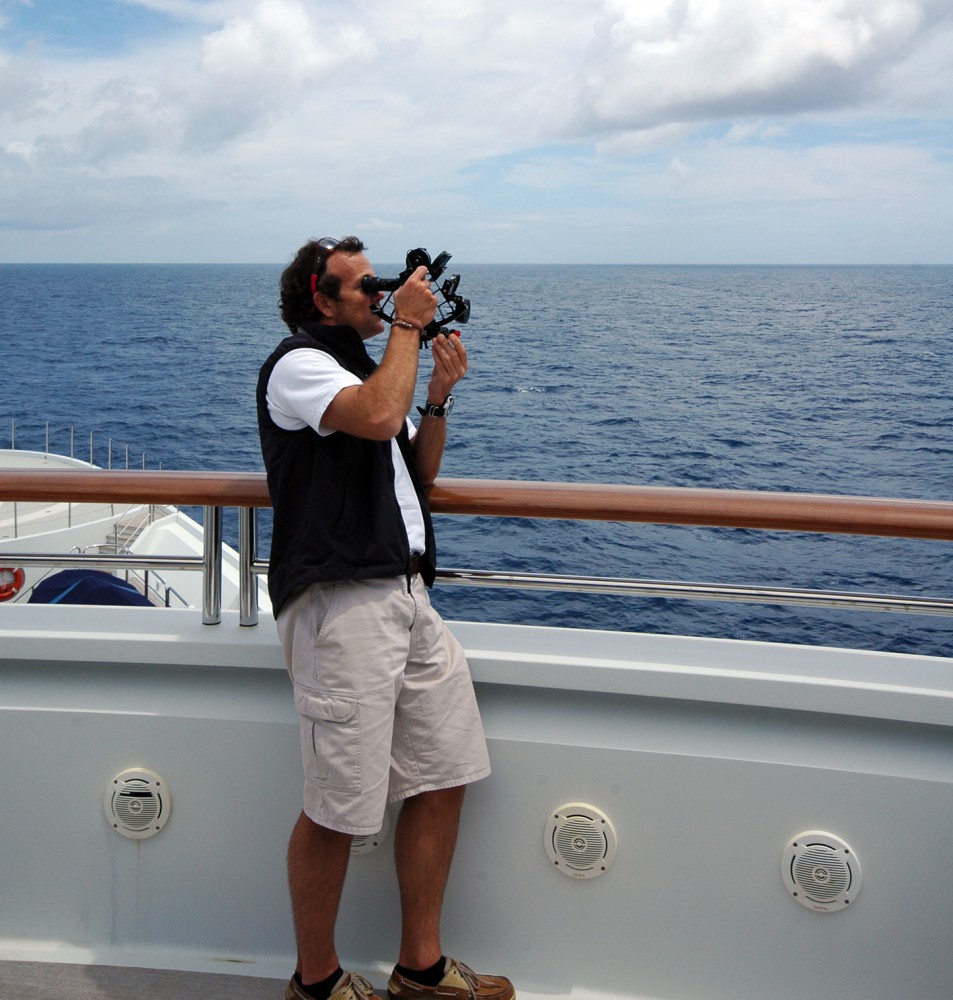
The infrastructural issues
Now, most of us would agree that a lot has changed since the mid-naughties. Flip phones aren’t as cool as they used to be, AIS wasn’t a given and neither was a helipad, but yachts are now infinitely more capable, more complex and more luxurious than ever before. O’Shannassy has seen expectations in the industry skyrocket in tandem. Owners demand more, guests want more. But underneath all the shiny surfaces and cutting-edge tech, the same basic structures that the industry had 20 years ago remain. And, according to the industry vet, this is the fundamental root cause of most operational issues across the fleet and needs to be addressed.
The result is a kind of operational dissonance. Yachts that have evolved in virtually every facet and by every metric but are still run as if they haven’t. “A 45-metre from the mid-90s had 15 crew,” O’Shannassy says. “Now a 50-metre has eight or nine and is far more capable. It’ll have a spa, some specialised feature, and the same crew is expected to run all of it. That can’t be right, can it?”
It’s a pattern he’s seen time and again. Yachts built to impress at the dock in Port Hercule but not equipped to function at sea. “I’ve had countless awkward conversations with disappointed owners who don’t understand why we’ve got five tenders and you can only run two at the same time. They rightly want to understand why their boat doesn’t function as they’ve imagined,” he says.
“Real operational feedback rarely reaches the owner because what actually happens is often filtered out. They’re not told how their yacht works, they’re told what they want to hear.”
“Across all the anchorages – from St Tropez to St Barts, from Portofino to Palau – the refrain on board is, ‘We need more crew’. There is a commercial and real-estate barrier to this and it’s not the silver bullet crew think it is. When they sing ‘more crew’ what they are really saying is ‘more efficiency’. We need the yachts to have built-in efficiencies to help us deliver what we should.
“In some cases, the inefficiencies are so embedded they’re just accepted. During stores, I’ve joined the line of 30 crew members, carrying provisions down into the boat, for a total of two hours of manual lifting. That’s 60 labour-hours just to put the food away, oh and about half again to carry the waste packaging/product off. Why couldn’t it be pre-packaged, sized for storage and delivered through a purpose-built loading bay? It still doesn’t. It’s these kinds of tweaks that seem superficial at first glance but are imperative to operational efficiencies that satisfy our patrons.
“Part of this efficiency drive is to remove as many functions that can be done by a shore office. We should not be managing the plane, while flying it. The guest-use days could/should increase and the ‘downtime’ requests decrease.”
So while service expectations have risen along with technology, the infrastructure, human resource, and other aspects haven’t kept pace. We’re trying to meet this higher level of expectation on this more capable platform by doing the same things over and over, while the gap is getting harder to square. Basic logistics, such as the food delivery example, show how far off course things have drifted.
What makes this different from other industries is that inefficiency doesn’t carry consequences. There’s no pressure to streamline when the system doesn’t track its performance. “We don’t have the trading feedback loop. We don’t have monthly books,” he adds. “If you’re running a corner shop and you can’t make payroll, you’ll know your business isn’t up to snuff. But a yacht rolls along inefficiently.”
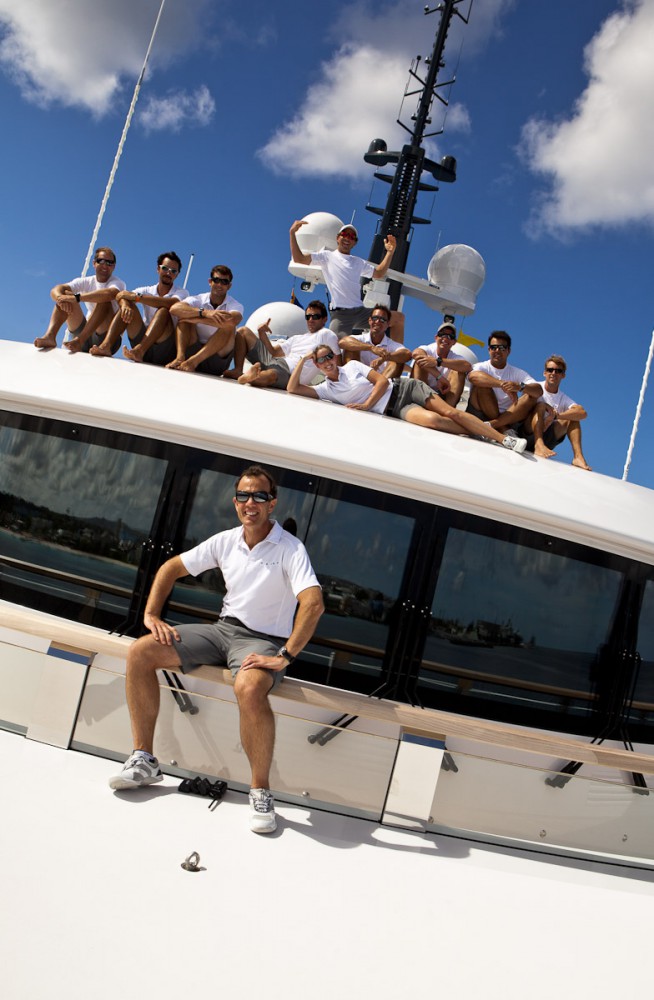
The weaknesses in the recruitment process
Where this strain shows up most visibly is in crewing, where the manning model hasn’t kept pace either. Rotation, often held up as a solution, is misunderstood. “There’s quite a lot of prayer at the altar of rotation. It’s a false idol,” he says. Rather than being designed around crew welfare, it’s often reactive, a patch for more profound systemic fatigue. It may be suitable for some operations, but it’s frequently applied for the wrong reasons. “We risk developing the wrong culture and recruiting the wrong people,” continues O’Shannassy. “Young people entering the industry should be looking to work hard while they can, see the world and save money. If you’re joining to go home as soon as possible, you’re the wrong person.”
And fatigue is just one piece of a much broader challenge. Yachting’s offer to new entrants doesn’t stack up the way it once did. “My daughter earns more working at a ski hut than a new-entrant yacht crew does,” he says. “The EU staff in our coffee shop earn more gross per month than a deckhand.” Factor in patchy tax exemptions, inconsistent pay, limited training and high turnover and the cracks in the pipeline shatteringly resonate.
This is why we are at a crisis point. How can we attract the right talent to our industry when we can’t or don’t offer them competitive benefits? The value proposition is so skewed, and for young people looking to form a career in hospitality or engineering, yachting doesn’t provide adequate opportunities compared to other sectors vying for their signature. It sells them an idea that they will be enjoying champagne on the aft deck or in a jacuzzi, rather than making beds, cleaning rooms and daily washing the same area of an already clean yacht.
For all the ambition, investment and complexity etched into the modern fleet, O’Shannassy believes the industry still fails on one essential point: it doesn’t behave like a system. The problem, as he sees it, is structural as much as it is about recruitment.
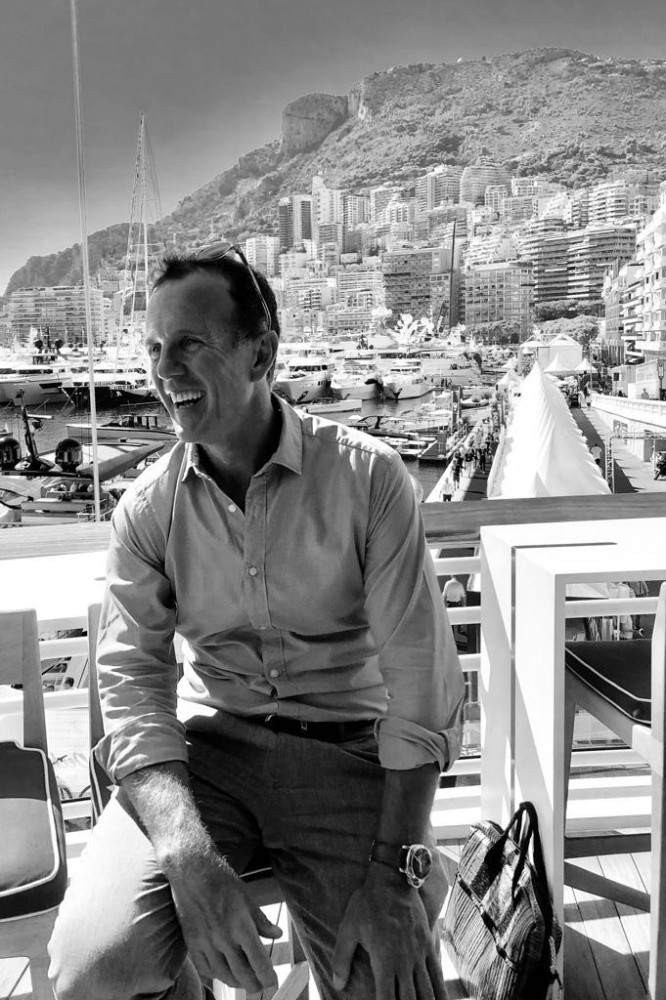
“Leadership is about giving your crew clarity so they can make good decisions without you. It’s not about knowing the answer to everything 100 per cent of the time.”
The need for structure
“We should be looking up at the Four Seasons Hotels. For how much our owners invest, we should be training their crew, their service team, but, in practice, the opposite is true. So when my close friend and VP of Four Seasons talks about service excellence, get your pen out. They train it constantly. They drill it into culture. They build careers,” he explains. “In yachting, service is often spoken about aspirationally with big language and bigger assumptions, but the systems behind it are rarely in place. We don’t offer real training. When you look at the delivery of hotel services on board comparatively, sorry, it’s embarrassingly lacking.”
And the situations are not due to a lack of solutions, rather a sheer lack of willingness to adopt them. “It’s not like we need to invent anything. Hotels, private aviation, they all operate in this manner. The systems are already there. We just have to copy it.”
The contrast matters because it exposes what is missing. In most businesses, poor performance is evident quickly in balance sheets, customer reviews and staff turnover. In yachting, there’s no such feedback loop. In most companies, you know when you’re underperforming. You miss payroll, your numbers dip, the alarm bells ring. Yachts roll along inefficiently. There’s no P&L logic, no guest night metrics, no standardised KPIs. Instead, managers discuss building pedigree, crew placement or charter bookings. However, how a yacht actually runs and performs as an asset does not receive the same scrutiny.
“Beauty in design is directly correlated to efficiency, not in conflict: the master stateroom, the best deck entertainment area cannot reach its full potential if the areas ‘behind the curtain’ are not optimised. In new constructions yacht owners correctly obsess about ceiling heights and the flow from the spa to the cabins. This is the correct focus for the end-user, so long as they have someone in their team with the same obsession looking to the laundry, the fridges and the service paths.
“Real operational feedback rarely reaches the owner because what actually happens is often filtered out. They’re not told how their yacht works, they’re told what they want to hear. Instead of metrics, there is marketing, accolades for the build pedigree, interior styling and LOA. What does that tell an owner about the day-to-day, and in a broader scope, the annual runnings of their yacht?” questions O’Shannassy. “Tell me how many days you’re at anchor, how many days you’re underway, how many days you’ve got guests and how many per day. That’s the business model. Everything else is downstream from that.”
“I’ve had countless awkward conversations with disappointed owners who don’t understand why we’ve got five tenders and you can only run two at the same time. They rightly want to understand why their boat doesn’t function as they’ve imagined.”
The mismatch between owner expectations and reality
Scale is where the cracks protrude deeper. For all the talk of large fleet operations, most management companies operate more like intermediaries than operators. “One hundred yachts under management? No. You’ve got one hundred times one. That’s not a fleet,” he adds. “You’re not capturing any of the operational value. There’s no appetite to fix the model. We romanticise what yachts are, but we don’t want to run them that way. We want to believe we’re a fleet, but we act like a collection of exceptions.”
Procurement is one of the clearer examples, being fragmented, unleveraged and inconsistent. Uniforms, fuel, insurance and catering are all sourced independently, often with no data or oversight. O’Shannassy stresses the fact that we could save owners (conservatively) tens of thousands just by acting like a commercial fleet, with one management company handling the logistics and saving time. “The uniforms are still yours, but the supplier is shared. The fuel specification remains, but the rate has been negotiated. The contracts are consistent. But right now, that structure doesn’t exist. It’s not a supply chain, it’s a supply spider web.”
This is why so many yachts end up, undertrained and poorly aligned with their owners’ original expectations. “If I were a yacht owner, I’d be appalled,” he says. “You’re sold the dream and then left with a nightmare, trying to figure it out one tender launch at a time. And this, O’Shannassy argues, is the problem in miniature, as the yacht may be extraordinary, but the system running it is not.
The need for leadership
With all this visible, O’Shannassy is more motivated than disillusioned. What frustrates him is the gap between what the industry could be and what it’s still settling for. And it shouldn’t take much. A bit of structure, accountability and transparency would go a long way to change the whole operating rhythm of the boat. That rhythm starts with clarity, however, not technology. Just knowing what the job is and how to do it.
Yachts don’t need another app to be efficient. They need return to the fundamentals of business practice and seek efficiency at every turn. From there, it’s understanding and preparing for the fundamentals of asking the owner their vision, backed by the data. “That’s your business,” he adds. “If you don’t know those numbers, you don’t know your yacht.”
Structure, for O’Shannassy, is about enabling people to do their jobs properly and that begins with leadership. “Paraphrasing the ISM code, my job description says: communicate, clarify, motivate. And that’s beautiful. Leadership is about giving your crew clarity so they can make good decisions without you. It’s not about knowing the answer to everything 100 per cent of the time.”

The veteran is just as clear on culture. We will continue to hear the old guard talk about work ethic and loyalty. But younger crews aren’t broken, he argues, they’re better. “These guys are fabulous. They’re better educated than we were. They have better boundaries,” he says. “They’re not fragile. They won’t tolerate the same things and will fire poor leaders faster than the reverse. And that’s not a problem, that’s an upgrade. I don’t buy into the idea that psychological safety is a soft issue; it’s the largest performance driver.”
“We’ve treated mental health like a crisis,” he adds. “It’s not. It’s an opportunity. It should be a lever to elevate our standards across the board. Because when you create that safety, you get accountability. You get better decisions, better service, better everything. And the truth is, most people want to lead well, but they don’t have the structure to do it. “No one gets up saying, ‘I want to be toxic today’. But without clarity, you lead from frustration. And that’s where it all starts to fall apart.”
So what’s the answer? Simply put, We Standardise what should be standard. Give people the tools, measure what matters, set expectations, share knowledge ...
The solutions
So what’s the answer? Simply put, We Standardise what should be standard. Give people the tools, measure what matters, set expectations, share knowledge. These problems are blatant and staring us in the face in every guest complaint, every burnt-out crew member and every confused owner wondering why they haven’t received the boat they were promised when they signed on the dotted line.
Yachting continues to talk about excellence without defining it. It celebrates scale without achieving it, recruits talent without retaining it. It discusses training, leadership and guest experience as if they’re aspirational ideas, rather than the foundations of any serious operation. And the fact is, the playbook exists. The standards are already proven in other sectors, and O’Shannassy’s hotel business is a testament to that. What’s missing is the will to connect the dots that align capability with culture, design with delivery, and cost with consistency.
“This industry isn’t broken,” O’Shannassy says, “but we just can’t keep pretending it works as it is. If we don’t address this value gap and if we don’t professionalise properly, we’ll lose the very people, performance and reputation we rely on. If we want it to last and keep talent, keep value, keep the experience worth paying for, then we’ve got to stop pretending it’s already perfect. And start building something that actually works. There’s huge value in this crisis. But only if we choose to respond to it.”
This article first appeared in The Superyacht Report – Captains Focus. With our open-source policy, it is available to all by following this link, so read and download the latest issue and any of our previous issues in our library.
NEW: Sign up for SuperyachtNewsweek!
Get the latest weekly news, in-depth reports, intelligence, and strategic insights, delivered directly from The Superyacht Group's editors and market analysts.
Stay at the forefront of the superyacht industry with SuperyachtNewsweek
Click here to become part of The Superyacht Group community, and join us in our mission to make this industry accessible to all, and prosperous for the long-term. We are offering access to the superyacht industry’s most comprehensive and longstanding archive of business-critical information, as well as a comprehensive, real-time superyacht fleet database, for just £10 per month, because we are One Industry with One Mission. Sign up here.
Related news
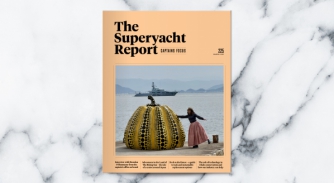
The Superyacht Report 225: Captains Focus – out now!
Real stories from the helm on leadership, operations, culture and life at sea hot off the press. Get your digital copy of TSR 225 here
Opinion
-copy.jpg)
The Crew Conundrum: What the industry really thinks
From mental health to training, pay and progression, the conversation around superyacht crew is louder than ever. But what does the industry itself think?
Crew
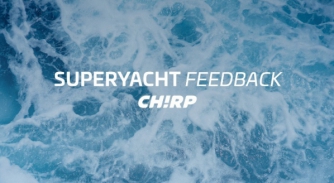
CHIRP Report: MLC living conditions
When an opportunity to address crew safety and welfare concerns raised during repair period was ignored by management
Crew
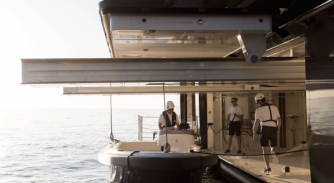
Hill Robinson to support its crew with new helpline
The yacht management firm will now provide a 24-hour, confidential emotional support service operated by ISWAN to all crew working in its fleet
Crew
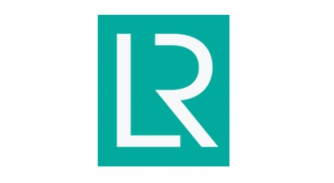
Lloyd’s Register launches safety survey
With greater scrutiny on industry-wide safety standards, the classification society urges you to have your say in its Yacht Safety Culture & Wellbeing Surve
Crew
Related news
The Superyacht Report 225: Captains Focus – out now!
6 months ago
The Crew Conundrum: What the industry really thinks
6 months ago
CHIRP Report: MLC living conditions
7 months ago
Hill Robinson to support its crew with new helpline
7 months ago
Lloyd’s Register launches safety survey
8 months ago
NEW: Sign up for
SuperyachtNewsweek!
Get the latest weekly news, in-depth reports, intelligence, and strategic insights, delivered directly from The Superyacht Group's editors and market analysts.
Stay at the forefront of the superyacht industry with SuperyachtNewsweek


